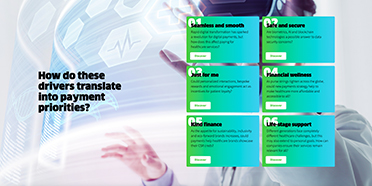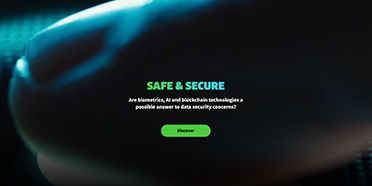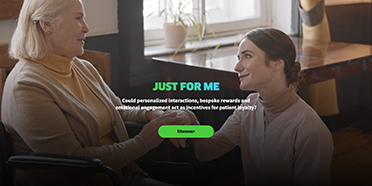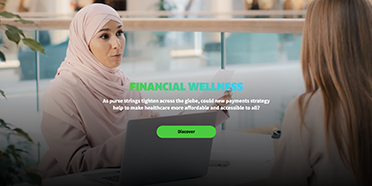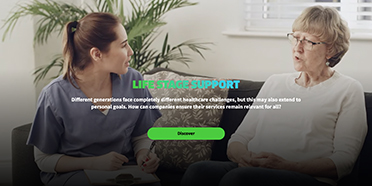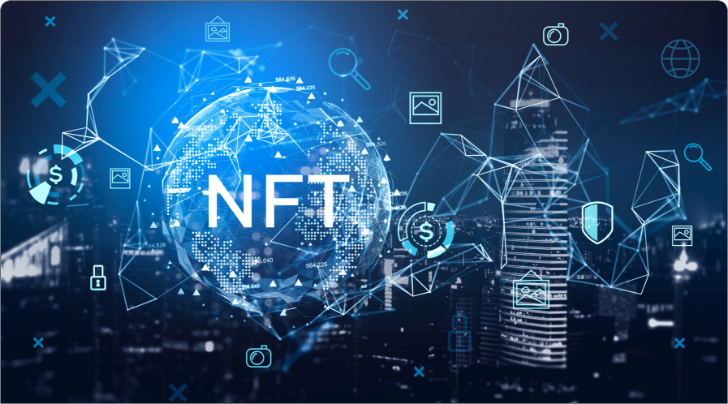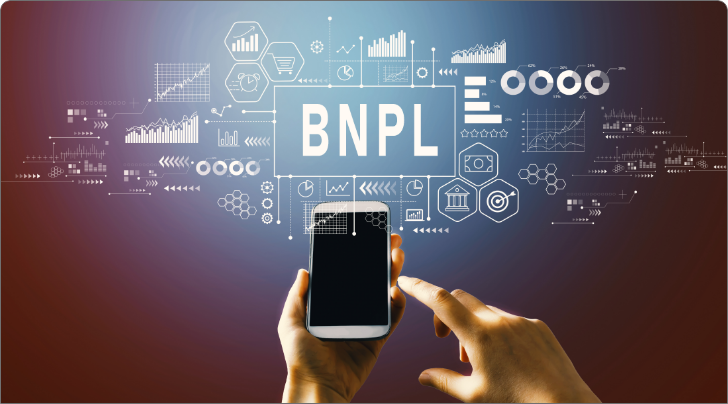
FUTURE OF PAYMENTS: A HEALTHCARE FOCUS
How are payment innovations contributing to the future of healthcare?
Worldpay x Stylus

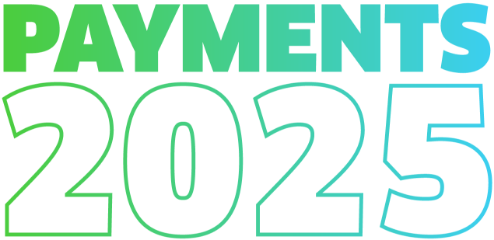
1 / 36

On the road to healthcare
The pandemic highlighted many of the barriers in the delivery of healthcare across the globe, particularly around affordability and healthcare access. It exacerbated the differences in healthcare needs between different generations and consumer groups - but it also witnessed a shift to digital healthcare which could hold the power to solve some, perhaps many, of the aforementioned challenges.
Looking forward, the prioritization of self-care and the needs of an eco-conscious and socially-aware consumer marketplace are driving further healthcare innovation. However, financial challenges may remain a constraint, with the cost-of-living crisis in full swing worldwide. Healthcare providers tapping into digital technologies to provide affordable, personalized solutions and frictionless payment journeys for cash-conscious patients could create new opportunities that may help them come out on top in this complex and ever-shifting landscape.
2 / 36
What’s driving change?
6 Key Macro Drivers pushing innovation in healthcare forward
 Digital acceleration
Digital acceleration
E-commerce is set to grow by $1.4tn between 2021 and 2025, driving non-cash payment volumes higher1. Why? Global lockdowns, the rise of digital and cryptocurrencies, 5G, IoT, blockchain-built Web 3.0 and even VR.
 Mass mistrust
Mass mistrust
With rampant misinformation and widespread leaks of private information, distrust of governments, businesses and media is now more common. It’s no surprise that 71% of global consumers worry about hackers and cyber-attacks2.
 Stagnant economies
Stagnant economies
Stagnant wages, exponentially rising expenses and expanding socioeconomic inequality are impacting consumers’ quality of life. Covid-19 has exacerbated the struggle, pushing ~124 million people into extreme poverty worldwide3.
 New health paradigm
New health paradigm
The pandemic has affected our approach to health. A new paradigm is emerging, with 79% of people stating their mental and physical health as equally important4. Many consumers believe brands should be contributing to these aspects of wellbeing.
 Collective consciousness
Collective consciousness
A global socio-economic awakening is underway, as consumers confront systemic inequality and climate risks. Worldwide, 60% of people say wealth inequality is a serious form of inequality in their country5, while 70% say climate change is a major threat6.
 Shifting demographics
Shifting demographics
The global population is ageing rapidly, with the proportion aged 65 years plus expected to increase from 9.3% in 2020 to 16% in 20507. The number of consumers from diverse and multi-racial backgrounds is growing too.
1 Euromonitor, 2021, in BizCommunity, ʻE-commerce to account for half of global retail growth by 2025ʼ, https://bit.ly/3IXBISO
2 Edelman, 2021, ʻEdelman Trust Barometer 2021ʼ, https://bit.ly/3L6b1y5
3 The World Bank, 2021, ʻUpdated estimates of the impact of COVID-19 on global poverty: Turning the corner on the pandemic in 2021?ʼ, https://bit.ly/3l0S316
4 IPSOS, 2021, ʻWorld Mental Health Dayʼ, https://bit.ly/3Lav8Lr
5 IPSOS, 2021, ʻMost believe income and wealth inequality to be the most serious form of inequality in their countryʼ, https://bit.ly/421ERKb
6 Fagan and Huang, Pew Research, 2020, ‘Many globally are as concerned about climate change as about the spread of infectious diseases’, https://pewrsr.ch/3IVewog
7 UN, 2020, ʻWorld Population Ageing 2020 Highlightsʼ, https://bit.ly/3JaTF0u

3 / 36
How do these drivers translate into payment priorities?
Seamless and smooth
Rapid digital transformation has sparked a revolution for digital payments, but how does this affect paying for healthcare services?
Safe and secure
Are biometrics, AI and blockchain technologies a possible answer to data security concerns?
Just for me
Could personalized interactions, bespoke rewards and emotional engagement act as incentives for patient loyalty?
Financial wellness
As purse strings tighten across the globe, could new payments strategy help to make healthcare more affordable and accessible to all?
Kind finance
As the appetite for sustainability, inclusivity and eco-forward brands increases, could payments help healthcare brands showcase their CSR creds?
Life-stage support
Different generations face completely different healthcare challenges, but this may also extend to personal goals. How can companies ensure their services remain relevant for all?
4 / 36
01
SEAMLESS AND SMOOTH
Overview
As the pandemic shifted payments into the realm of digital, healthcare consumers have come to expect simple and streamlined experiences that elevate convenience.
Demand for omnichannel payment methods could continue to ramp up, and with it the desire to transact with a broader range of digital currencies.
As the move to digital healthcare continues, we could see payment solutions traversing the borders between real-life, tele- and extended (VR / AR) reality, potentially one day moving to the metaverse.
Key statistics
6 / 36
![]()
Key statistics

of UK consumers will desert a transaction if they experience payment friction – and 77% expect payments to be instantaneous.
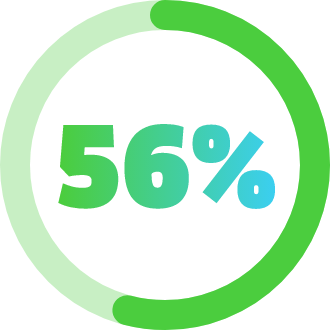
of US adults own or have owned cryptocurrency, and 41% who’ve never owned crypto say they’re likely to buy it in the next year.
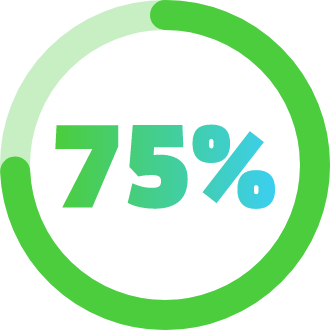
of US healthcare providers use paper and manual processes for collections, but 72% of US patients say theyʼd be less likely to miss payments if healthcare expenses were accessible in a single place.
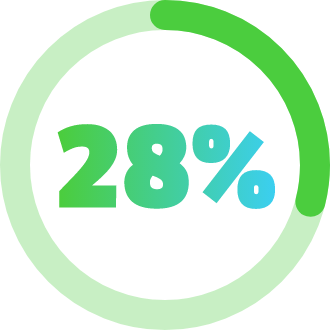
of patients across the world would like to use digital or mobile wallets to pay for healthcare.
Prior to the pandemic,
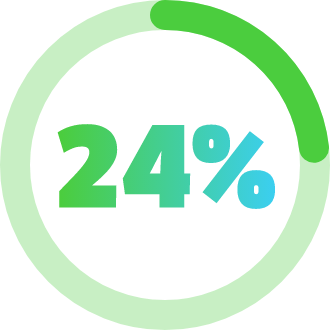
of Americans had experienced a telehealth visit, but during Covid that number rose to 54%.
01
SEAMLESS AND SMOOTH
Frictionless
purchasing
Lockdowns and health concerns saw digital payments surge. One in three consumers started using digital payment tools in the last six months of 20218.
These digital experiences are affecting how consumers manage medical-related payments – often independently, from their mobile devices. 65% of US consumers want to keep using digital and self-service options for healthcare payments9. Transparency and upfront communication could also be considered critical, especially given the fact that ~87% of US consumers were surprised by their medical bill in 20219. Overall, digital payments could help reduce billing surprises for patients and simplify revenue cycle management for providers.
Key opportunities
Key takeaways and implications for healthcare
Healthcare consumers are increasingly looking for similar frictionless and streamlined payment experiences they’ve become used to receiving from other industries. Expectations for payments with digital currencies and transacting in virtual wellness spaces are also growing.
Frictionless purchasing
Looking for convenient payment experiences, healthcare consumers could opt for the services that allow ease and independence.
Key opportunities
- Work with a payments partner that can help you remove the complexity in the patient journey by allowing your customers to pay their bills online.
- Transparency is key - outlining payment options upfront and aiming to reduce unpleasant billing surprises could help you keep your customers happy.
7 / 36
01
SEAMLESS AND SMOOTH
All currencies
welcome
The use of non-fungible tokens (NFTs) medical cryptocurrency in some healthcare services could be expanding, with use cases including the purchase of services and medicine, or as an incentive for more visits to a provider.
In Q2 2022, there were 19 medical crypto variations available to purchase and spend11 . Note that rather than a universal currency, most crypto coins referred to in the above example are only valid for certain market segments like dental care or to promote a physical activity.
Key opportunities
Key takeaways and implications for healthcare
Healthcare consumers are increasingly looking for similar frictionless and streamlined payment experiences they’ve become used to receiving from other industries. Expectations for payments with digital currencies and transacting in virtual wellness spaces are also growing.
All currencies welcome
Looking for convenient payment experiences, healthcare consumers could opt for the services that allow ease and independence.
Key opportunities
- Work with a payments partner that can help you remove the complexity in the patient journey by allowing your customers to pay their bills online.
- Transparency is key - outlining payment options upfront and aiming to reduce unpleasant billing surprises could help you keep your customers happy.
8 / 36
01
SEAMLESS AND SMOOTH
Payments
without borders
71% of US consumers now expect telehealth to be an option for health visits10, with innovation arising in payments to facilitate smoother appointments no matter where the customer is in the world.
The industry could also be moving towards the metaverse. As adoption grows, users could expect healthcare services here too. Cloud-based collaborative training and AR-led surgeries could already be a reality.
As healthcare moves towards value-based care (where providers are paid based on patient health outcomes), VR applications may help deliver the education, therapy and lifestyle tools required to achieve lower-cost value-based care. This could well mean that payments will increasingly need to be facilitated in these virtual domains.
Key opportunities
Key takeaways and implications for healthcare
Healthcare consumers are increasingly looking for similar frictionless and streamlined payment experiences they’ve become used to receiving from other industries. Expectations for payments with digital currencies and transacting in virtual wellness spaces are also growing.
Payments without borders
Looking for convenient payment experiences, healthcare consumers could opt for the services that allow ease and independence.
Key opportunities
- Work with a payments partner that can help you remove the complexity in the patient journey by allowing your customers to pay their bills online.
- Transparency is key - outlining payment options upfront and aiming to reduce unpleasant billing surprises could help you keep your customers happy.
9 / 36
02
SAFE & SECURE
Overview
Securing consumersʼ personal data is of the utmost importance15. Biometric authorization – via face, iris, fingerprint and voice – could be set to replace pins, passwords and security numbers, and is emerging as one of consumersʼ choices for healthcare record identification16.
The application of artificial intelligence (AI) is allowing for a more personalized payment process and helping with the issue of payment errors17. Meanwhile, the move to platforms built on blockchain technology may be the next thing for healthcare, which could see control shifting from providers to patients.
Key statistics
15 Semafone, 2021, ʻSemafone Survey Reports Majority of Patients Will Leave Healthcare Providers if Paymentor Personal Information is Compromisedʼ,
16 Garcia, Capterra, 2022, ‘Has COVID-19 monitoring changed how UK consumers feel about sharing biometric data?’, https://bit.ly/3F9Sjlp
17 JAMA, 2019, ʻWaste in the US Health Care System; Estimated Costs and Potential for Savingsʼ, https://bit.ly/3T9tyLW
11 / 36
![]()
Key statistics
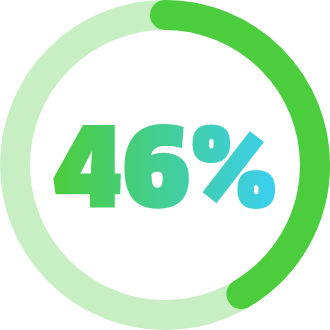
of American adults say that face, voice, iris, fingerprint and other biometric scanning systems have made their lives better.

of US consumers would leave a healthcare provider if their payment data was compromized in a data breach due to the provider’s lack of security measures.
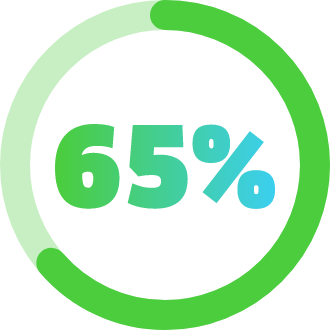
The global blockchain in healthcare market is expected to register a revenue CAGR of 65% during the forecast period 2020-2027.
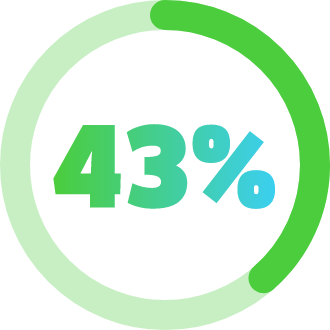
of US patients are interested in establishing digital payments for their healthcare treatments.
02
SAFE & SECURE
Biometric access
Telehealth, backed by electronic health records (EHR), may be emerging as the new normal. EHR adoption rates are set to reach 89% in 202218.
However, some physicians say accessing EHR may not be user friendly and as fraud becomes increasingly common, patients are worried about data security. This is where biometric authentication could be a solution. For example, patient “voiceprints” identified by voice recognition software could help with boosting security, allowing access to updated records, or even bill payments.
Key opportunities
Key takeaways and implications for healthcare
Consumers value their right to data protection highly. How could healthcare providers ensure they’re keeping patient data safe? One way is through utilizing tech-led tools like biometric authentication software or AI-led features. Blockchain and Web 3.0 could also be seen as shifting control and privacy back to consumers.
Biometric access
Biometric authentication could be replacing PINs and passwords as a more secure mode of a healthcare payment.
Key opportunities
- Biometric authentication could increase the shield against fraud and misidentification, resulting in a streamlined payments experience.
- Paying via contactless facial recognition could also gain traction as a future opportunity – working with a partner who keeps on top of tech advancements can help you be prepared for this future.
12 / 36
02
SAFE & SECURE
AI-Powered protection
Healthcare payment errors make up more than $300bn annually in unnecessary spending - about 10 cents to every dollar spent21. Using AI could be one way to solve for the issue of incorrect payments and potentially reduce conflict over reimbursements.
AI-Powered protection Digitzation is set to replace manual and paper processes, embedding greater protection for patientsʼ personal data. AI-driven systems could personalize the billing and collections process further, offering an intuitive and automated payment solutions for patients.
Key opportunities
Key takeaways and implications for healthcare
Consumers value their right to data protection highly. How could healthcare providers ensure they’re keeping patient data safe? One way is through utilizing tech-led tools like biometric authentication software or AI-led features. Blockchain and Web 3.0 could also be seen as shifting control and privacy back to consumers.
AI-Powered protection
AI-based solutions could not only assess healthcare consumers’ likelihood of completing a payment but also auto-negotiate medical bills and solve for billing errors.
Key opportunities
- Machine learning could help providers manage incorrect billing and payments, as well as identify patients’ affordability.
- AI could provide a solution for more personalized and automated money management tools for consumers, helping with reducing unpleasant surprises.
13 / 36
02
SAFE & SECURE
Blockchain-built trust
Many facets of healthcare are becoming digital. Some are also becoming decentralized and possibly moving to peer-to-peer payment models.
Where traditional healthcare payment systems may have often slow and riddled with unnecessary expenses, we could be seeing blockchain being leveraged to create efficiency across key players in the payments process. How? Often by removing the “middle men” that have held back the settlement process and driven up expenses for all parties.
See how in the next examples.
Key opportunities
Key takeaways and implications for healthcare
Consumers value their right to data protection highly. How could healthcare providers ensure they’re keeping patient data safe? One way is through utilizing tech-led tools like biometric authentication software or AI-led features. Blockchain and Web 3.0 could also be seen as shifting control and privacy back to consumers.
Blockchain-built trust
As the move towards decentralized finance and transacting grows, blockchain tech may help boost trust, transparency and efficiency.
Key opportunities
- Health data could be transformed into NFTs, turning it into an asset that can be shared securely on the blockchain.
14 / 36
03
JUST FOR ME
Overview
Healthcare payment journeys are increasingly becoming personalized to match consumer expectations25 and enhance loyalty. Reward programmes offering bespoke perks and discounts could help with repeat purchases as well. Latest innovations in the industry are further helping to encourage healthier habits and outcomes.
Engaging with customers based on their psychographic traits may also improve the payments process for both patients and providers.
Key statistics
25 Stackla, 2021, ‘Post-pandemic, Shifts in Consumer Shopping Habits: Authenticity, Personalization and the Power of UGC’, https://bit.ly/3LrTxfR
16 / 36
![]()
Key statistics

of US, UK and Aus consumers say it’s important for brands to provide them with a personalized experience – up from 67% in 2019.
$1.6bn
The market value of neuro-marketing is predicted to grow from $1.6bn in 2022 to $3.2bn in 203226.

of US healthcare users said that knowing their bill and making a payment prior to their visit is an easy way to pay – but only 30% get cost estimates before treatment.

of US consumers would pay to join a premium health and beauty loyalty programme (offer immediate benefits that can be used at any time in exchange for a membership fee).
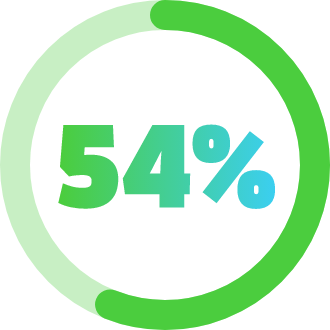
of US healthcare users experienced at least one pain point during the payment process in the last 12 months.
26 FMI, 2022, ‘Neuromarketing solutions Market Outlook (2022-2032)’, https://bit.ly/3T5e5fW
03
JUST FOR ME
Personalized interaction
Nearly one-third of patients want to better understand the required costs before a procedure or visit. However, almost half (40%) of those who want this information state it may be either inaccurate or difficult to find27.
Addressing individual patient pain points and adding transparency to the payment journey could be key. There are already some examples in the market of how to achieve this. For example, virtual healthcare may be offered on a subscription basis, with tiered payment options that level up based on the degree of personalization received.
Key opportunities
Key takeaways and implications for healthcare
Healthcare payments are pivoting towards personalization, which could help boost customer loyalty and incentivize healthier habits for better healthcare outcomes. Pre-visit concierge services, NFT rewards schemes and tiered virtual health packages are among the opportunity spaces.
Personalized interaction
Consumers increasingly expect custom-made healthcare solutions, tailored to their individual needs throughout the whole care journey.
Key opportunities
- Pre-visit concierge-style services could give upfront insight into potential payments, based on patients’ health profiles.
- Focus on transparency and accessibility by including flexible payment options
17 / 36
03
JUST FOR ME
Bespoke rewards
As the move towards value-based care is set to accelerate28, membership schemes incorporating specific discounts or rewards are also set to follow this upward trend. Programs that offer benefits addressing primary pain points like prescription savings, are already in use.
Elsewhere, start-ups are incentivizing patients to adopt healthier habits or adhere to medical plans by linking their health-related activities to rewards such as wellness perks.
Key opportunities
Key takeaways and implications for healthcare
Healthcare payments are pivoting towards personalization, which could help boost customer loyalty and incentivize healthier habits for better healthcare outcomes. Pre-visit concierge services, NFT rewards schemes and tiered virtual health packages are among the opportunity spaces.
Bespoke rewards
Healthcare providers could cultivate loyalty and improve healthcare outcomes via new-era models that reward healthier habits.
Key opportunities
- Loyalty programmes that include rewards like offering savings on medications and care, for example, could attract more consumers.
- Wellness-related perks like free gym, mindfulness classes or massage therapy can help build engagement.
18 / 36
03
JUST FOR ME
Emotional engagement
The neuro-marketing industry is set to grow from $1.6bn in 2022 to $3.2bn in 203230. Personalizing messaging throughout the paymentʼs journey according to patientʼs bespoke psychographic traits allows for more tailored engagement31. This combined with innovations in the field (such as using facial expressions) could help with prompting payment action.
Paying according to an emotional state, however, is still a long distance away – doubt remains as to whether AI can accurately read emotional state via image-recognition or EEG headset readings32.
Key opportunities
Key takeaways and implications for healthcare
Healthcare payments are pivoting towards personalization, which could help boost customer loyalty and incentivize healthier habits for better healthcare outcomes. Pre-visit concierge services, NFT rewards schemes and tiered virtual health packages are among the opportunity spaces.
Emotional engagement
Understanding patients’ psychographic profile has the potential to help providers tailor messaging to individual needs and improve the payments process.
Key opportunities
- Adapting your approach according to patients’ values, interests and lifestyle could help with payment collections and further enhance relationships.
- Innovative tech could also be used as a means to prompt payment in healthcare space.
19 / 36
04
FINANCIAL WELLNESS
Overview
In the post-pandemic landscape, a possible recession and increased healthcare costs could be affecting consumers finances and in turn impacting their mental health. Opportunities lay ahead for healthcare providers who can help patients better manage wellness-related finances, spread payments over time or gain access to services they otherwise couldnʼt afford.
A shift to preventative care could see payments linked to healthcare outcomes rather than being based on different services or time of treatment.
Key statistics
21 / 36
![]()
Key statistics
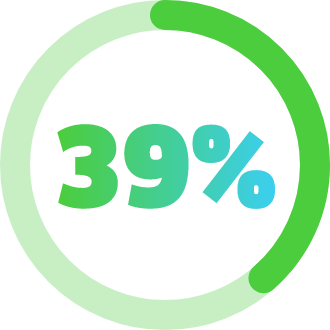
of UK adults (20.3 million) don’t feel confident managing their money – and 11.5 million have fewer than £100 in savings.
In America,
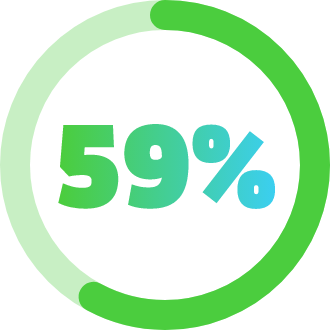
of adults want financial guidance but don’t know where to turn to receive it.
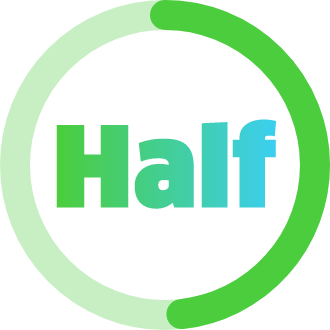
Nearly half of healthcare leaders said the pandemic would “propel the industry away from fee-for-service”.
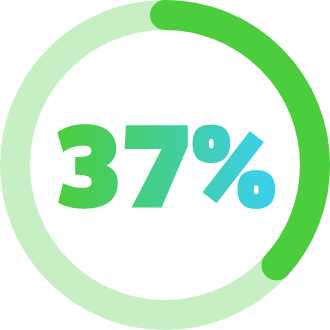
of US patients said they missed a medical bill because the payment system was complicated, with 74% agreeing that a consolidated view of their healthcare bills would be beneficial for budgeting.

of Americans living paycheck to paycheck want to use BNPL for out-of-pocket medical procedures.
$4.1tn
In the US, where healthcare expenditures grew 9.7% to $4.1tn in 2020, or $12,530 per person, accounting for 19.7% of GDP, value-based care has the promise to significantly reduce this.
04
FINANCIAL WELLNESS
Austerity armour
Heightened inflation, labor shortages and accelerating affordability challenges are contributing to increased healthcare costs in the US and around the world33. Soaring prices pose a significant threat to consumersʼ financial and physical wellness. 46% of US patients had skipped or delayed care because of the cost in 2022 and 42% had problems paying their medical bills34.
What to keep in mind? Empower consumers with more efficient and transparent payment solutions – such as marketplaces that could increase access to affordable care and allow for payments to be spread out, paid later or paid in pay-as-you-go formats.
Key opportunities
Key takeaways and implications for healthcare
Increasing inflationary pressures and healthcare costs have incentivized healthcare providers and employers to create more affordable access to care. Patients are seeking help to better manage their finances.
How can you help? This could be achieved with add-on financial-wellbeing tools to monitor or spread our healthcare spending, or a move to value-based care models, offering payments based on outcomes rather than delivered services.
Austerity armour
A post-pandemic spending squeeze means people are seeking greater control over healthcare spending.
Key opportunities
- Partner with a provider who can offer flexible payment methods like BNPL, pay-as-you-go and spreading out payments through subscriptions.
- Think about additional financial wellbeing tools that help customers with monitoring spending and providing insights into habits.
22 / 36
04
FINANCIAL WELLNESS
Employee protection
The healthcare industry has already been hit by labor shortages and a further gap of up to 450,000 in registered nurses and 80,000 doctors is expected in the US alone by 202537. This would inevitably add to increasing health costs and in some cases could also affect health sites closures or increased wait times.
What could employers do to attract new hires and help existing staff? As well as base-pay enhancements, healthcare recruiters could consider offering payments-related incentives and benefits that care for employeesʼ wellbeing and offer better access to healthcare options.
Key opportunities
Key takeaways and implications for healthcare
Increasing inflationary pressures and healthcare costs have incentivized healthcare providers and employers to create more affordable access to care. Patients are seeking help to better manage their finances.
How can you help? This could be achieved with add-on financial-wellbeing tools to monitor or spread our healthcare spending, or a move to value-based care models, offering payments based on outcomes rather than delivered services.
Employee protection
Innovative payment initiatives are keeping healthcare workers engaged, while employers are trying to boost employee access to care.
Key opportunities
- Allowing healthcare workers swifter access to pay, or offering on-demand healthcare talent, could help with attrition rates.
- Employers can help employees address gaps in social healthcare or insurance with subscriptions or zero-interest payments assistance.
23 / 36
04
FINANCIAL WELLNESS
Value-based healthcare
Value-based healthcare has seen shifting payments to providers from a fee-for-service approach to focus on patient health outcomes. This move to patient-led practice could mean patients spending less money to achieve better health through emphasis on quicker recovery and addressing chronic disease. In turn, this may result in fewer doctorʼs visits, tests and prescriptions.
Providers could achieve efficiencies and greater patient satisfaction while payers could benefit, as a healthier population with fewer claims and overall, less healthcare spending.
Key opportunities
Key takeaways and implications for healthcare
Increasing inflationary pressures and healthcare costs have incentivized healthcare providers and employers to create more affordable access to care. Patients are seeking help to better manage their finances.
How can you help? This could be achieved with add-on financial-wellbeing tools to monitor or spread our healthcare spending, or a move to value-based care models, offering payments based on outcomes rather than delivered services.
Value-based healthcare
Fee-for-service healthcare delivery models are making way for more cost-effective value-based care, with emphasis on preventative care.
Key opportunities
- Improving transparency and reducing complexity could help alleviate the administrative burden of value-based payments models.
- New value-based payments mechanisms could enhance coordination and equity for treatments.
24 / 36
05
Kind Finance
Overview
The healthcare sector may be falling behind addressing issues of sustainability and climate change. In the payments industry, however, going digital helps meet the demands for eco action through the use of virtual cards, digital receipts and mobile wallets42.
Although barriers to healthcare access beyond cost remain – including ability, race and age, new payments mechanisms aiming for increased social awareness are emerging. Bundled service subscriptions and tailored telemedicine platforms being amongst these.
Collective action driven by community spirit is funding treatments that otherwise wouldn’t be affordable, with new platforms streamlining the process.
Key statistics
42 The Paypers, 2022, ‘Sustainability in payments- Looking to the future’, https://bit.ly/41X3vvm
26 / 36
![]()
Key statistics
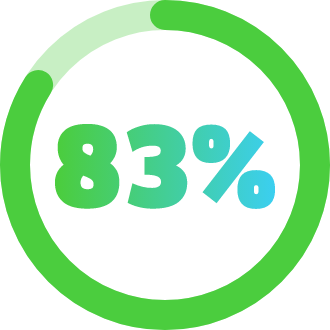
of people across the world want to be more sustainable every single day, up 10% from 2021.

of US, UK and Aus consumers believe retailers need to provide more authentic shopping experiences for customers like them.
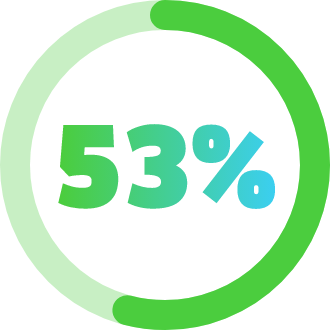
of UK adults say their financial situation makes it harder for them to donate to charities than it was six months ago.
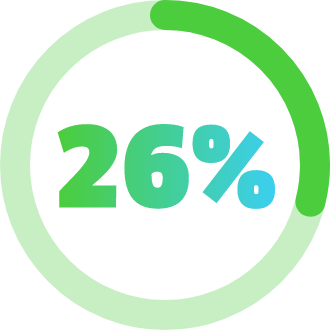
Globally just over 1 in 4 (26%) of consumers have knowingly made use of a sustainable banking product or service and 42% want incentives and loyalty programmes that reward them for making greener financial decisions.
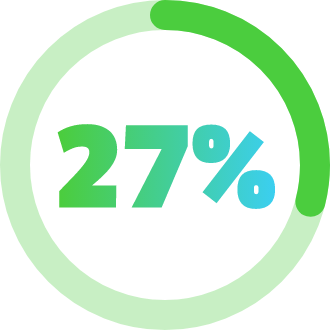
In America, 27% of Black households hold medical debt compared to 16% of non-Black households.
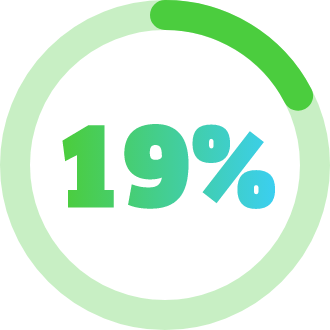
One fifth of US adults with medical debt (19%) said it’s preventing them from buying a home – 68% of them have lost sleep worrying about it.
05
Kind Finance
Eco action
The healthcare sector is responsible for almost 5% of global greenhouse gas emissions43 and if ‘business as usual’ continues, emissions could triple by 205044.
Energy-efficient surgery procedures, reusable equipment and net-zero delivery services could support effort to minimize industry’s impact. New payments-led initiatives such as offsetting healthcare payment programs, rewarding recycling schemes and automating micro-donations, could help drive deeper impact.
Key opportunities
Key takeaways and implications for healthcare
In response to healthcare consumers’ demand for sustainability, healthcare providers should adopt more eco-initiatives. Addressing barriers to healthcare beyond cost – including ability, race and age – is critical, while facilitating collection action to increase care affordability might be a key opportunity space.
Eco action
Consumers are increasingly thinking about sustainable purchasing and ways to reduce their carbon footprint.
Key opportunities
- Point-of-sale recycling initiatives that collect healthcare-related waste in exchange for rewards could help build engagement.
- Adopt healthcare payment mechanisms that allow for carbon offsetting or micro-donations as part of the check-out process.
27 / 36
05
Kind Finance
Inclusion imperative
Healthcare providers must consider barriers to care access beyond cost. In the US, some racial/ethnic groups are less likely to have health insurance, more likely to face cost-related barriers to getting care, and more likely to incur medical debt47.
With a vast need for focused support, payment brands can become allies via beneficial collaborations.
Key opportunities
Key takeaways and implications for healthcare
In response to healthcare consumers’ demand for sustainability, healthcare providers should adopt more eco-initiatives. Addressing barriers to healthcare beyond cost – including ability, race and age – is critical, while facilitating collection action to increase care affordability might be a key opportunity space.
Inclusion imperative
Opportunity exists in offering healthcare payment solutions that support inclusion.
Key opportunities
- Aggregating healthcare services in one platform and offering these on an affordable flat-fee basis could help with better access to care.
- Marketplaces that offer services tailored for different cultures and lifestyle could meet a growing demand.
28 / 36
05
Kind Finance
Community care
Collective wellbeing has remained on the agenda since the pandemic. There has been a growth in digital services that bring people with similar conditions together to support each other. Crowdfunding contributions for treatments are also soaring.
Healthcare platforms are helping to build caring patient communities. Here, payments could present new opportunities by helping to streamline crowdfunded donations by simplifying peer contributions and ensuring the correct use of funds.
Key opportunities
Key takeaways and implications for healthcare
In response to healthcare consumers’ demand for sustainability, healthcare providers should adopt more eco-initiatives. Addressing barriers to healthcare beyond cost – including ability, race and age – is critical, while facilitating collection action to increase care affordability might be a key opportunity space.
Community care
Consumers could be more likely to choose healthcare providers that make a positive difference in their community and society at large.
Key opportunities
- Facilitating crowdfunding payments for medical treatments could tackle issues around affordability.
- New payment mechanisms the promote transparency and security could leverage the willingness to share sensitive data for the collective good.
29 / 36
06
Life Stage Support
Overview
Young adults are struggling to afford rising healthcare bills and want support in accessing affordable care, particularly around wellness. Data shows that 74% of millennials and 56% of Gen Z patients have canceled a healthcare appointment after receiving a cost estimate that was higher than they could afford52.
Time-pressed Gen X want healthcare payments to be streamlined and flexible, catering to the multi-member households they’re often responsible for.
As later life approaches, independence and financial security are among the major priorities. To cater for this group’s needs, providers should look into enabling preventative, in-home support, or embed assistive tech for accessibility.
Key statistics
52 Experian Health, 2022, ‘How do different generations react to healthcare costs?’, https://bit.ly/3ZXEWwB
31 / 36
![]()
Key statistics
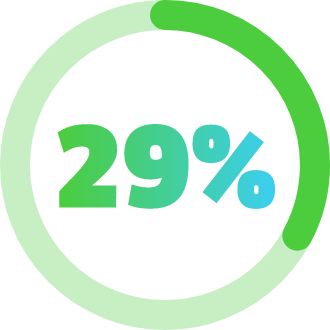
The cost of living is the top financial concern for 29% of global Gen Z, and 26% don’t feel confident that they will be able to retire

1 in 3 Australian retirees want to or have re-entered the workforce, with 60% doing so because of a need to earn more money.

of Gen Z patients indicated they would switch healthcare providers for a better payments experience.
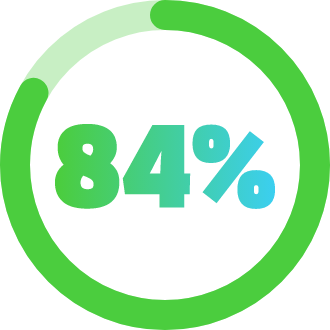
of US adults consider it important to be able to pay for healthcare visits quickly and using payment methods they prefer.
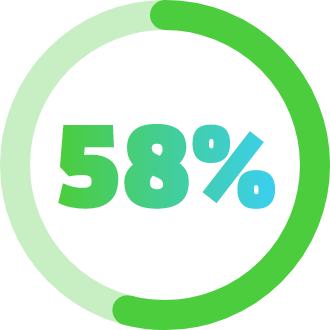
of US Boomers and Seniors can’t pay for medical expenses entirely through insurance, leading 22% to say they are interested in payment plans or third party finance.
06
LIFE STAGE SUPPORT
Approaching adulthood
Young consumers’ historically high costs of education and living have affected access to healthcare53. Self-employment and ’nomadic’ lifestyles are further aggravating healthcare debt; the 'gig economy' means that 60% of non-home-owning US Millennials are now responsible for their own health insurance54.
More than a third (38%) of millennials received an unexpected medical bill in 202255. What you should focus on as a provider: consider facilitating access to affordable care for young adults through offering spread-out payments or monthly subscription – alongside providing support for relevant care issues such as acne treatment.
Key opportunities
Key takeaways and implications for healthcare
When it comes to different generations, healthcare journey preferences and suitable payment options vary per their different needs. Consider providing millennials and Gen Z consumers with affordable solutions, while ensuring flexibility and family-friendly support to Gen X is key. To appeal to older generations - elevate independence and offer tech assistance that could help with accessibility.
Approaching adulthood
Tailor relevant solutions and products, keeping in mind young adults’ demand for affordable access to care.
Key opportunities
- Incorporate subscription-based payments or affordable patient billing solutions and plans.
- Look into the BNPL as a potential payment option, allowing more flexibility and access.
32/ 36
06
LIFE STAGE SUPPORT
Managing midlife
In the US, households with children under age 18 (24.7%) are more likely than those without children (16.5%) to carry medical debt57. That’s why, affordability and flexibility are both important factors to consider when catering for midlife consumers, especially those responsible for extended households.
Enhancing the healthcare experience through adding in affordable insurance plans, platforms consolidating multiple family members’ expenses, and age-specific health subscriptions including transparent fees and 24/7 access to virtual specialists, should be considered as lead differentiator.
Key opportunities
Key takeaways and implications for healthcare
When it comes to different generations, healthcare journey preferences and suitable payment options vary per their different needs. Consider providing millennials and Gen Z consumers with affordable solutions, while ensuring flexibility and family-friendly support to Gen X is key. To appeal to older generations - elevate independence and offer tech assistance that could help with accessibility.
Managing midlife
For this group, the highlight is on healthcare payments solutions that are streamlined, simple and match the need for increased flexibility.
Key opportunities
- Streamline useful information and provide access to virtual specialists and like-minded communities through social-focused features
- Combine all family members’ medical bills in one handy interface to make financial management more efficient.
33/ 36
06
LIFE STAGE SUPPORT
Later years allies
With life expectancy continuing to rise in many countries, ageing consumers are working an extra 15 to 20 years to alleviate economic pressures59 which in turn impacts their health.
To support the ageing population, healthcare providers could think about introducing flat fees for ongoing healthcare treatments, bringing in-home preventative care to avoid hospital bills, and offering financial and tech assistance to enable better accessibility to services.
Key opportunities
Key takeaways and implications for healthcare
When it comes to different generations, healthcare journey preferences and suitable payment options vary per their different needs. Consider providing millennials and Gen Z consumers with affordable solutions, while ensuring flexibility and family-friendly support to Gen X is key. To appeal to older generations - elevate independence and offer tech assistance that could help with accessibility.
Later years allies
Older consumers are prioritizing at-home independence and online access.
Key opportunities
- Subscription-based offerings that support wellness and keep older consumers connected with family and friends are likely to gain traction.
- Tools enhancing visibility or navigation should be considered for e-commerce and telehealth platforms; don’t forget to include assistance on how to use these tools too.
34/ 36
The road to the future
Current landscape
The past few years have already seen the healthcare industry buckling under pressure, with labor shortages, increasing costs, and archaic collections systems all worsening the issue.
Providers should focus on prioritizing the changes which could alleviate the most pressing concerns. The increase in online activity has changed healthcare consumersʼ expectations, making digital-first, streamlined and aggregated paths to payment non-negotiable.
Coming soon
The shift towards value-based care model will soon be adopted more widely with a specific emphasis on preventative care, offering tailor-made solutions.
As the world is gradually moving towards remote working, living and care, telehealth becomes even more important, with digital payments playing a vital part of the patient experience.
Possible futures
Possible futures may see a further move into decentralized, peer-to-peer transaction models where control could shift from providers to patients.
NFT rewards for healthier habits might grow in acceptance. And as the metaverse arrives, providers may be considering offering some of their services in these virtual spaces.

35 / 36

©2023 FIS and/or its subsidiaries. FIS®, Worldpay®, and any associated brand names/logos are the trademarks of FIS and/or its affiliates. All other trademarks are the property of their respective owners. This content is for information purposes only. We have taken care in the preparation of this information but will not be responsible for any loss or damage including loss of profits, indirect, special or consequential loss arising as a result of any information in this document or reliance on it. The content of this material may not be reproduced without prior consent of Worldpay. This material may include information on third parties and their services. The reference to these third parties is for information purposes only and does not constitute an endorsement or recommendation of the third party or their service.
Payments 2025 is a thought leadership campaign launched by Worldpay from FIS to highlight the key trends shaping the future of payments. Using our many years of experience and leveraging our vast network of specialists from across the payments industry and beyond, we will share expert opinions and recommendations as well as explore the social, economic, technological and environmental factors that will inform the future and help our merchants to prepare for tomorrow.

36 / 36


